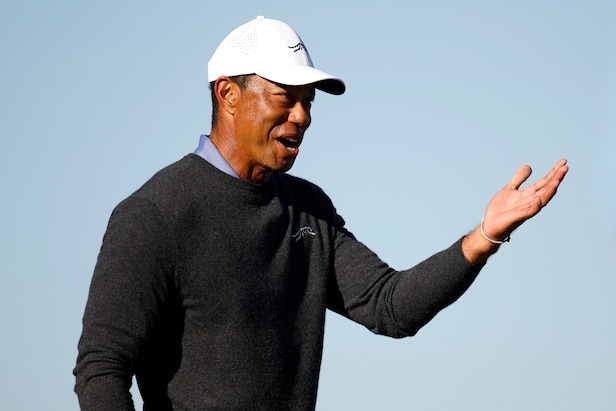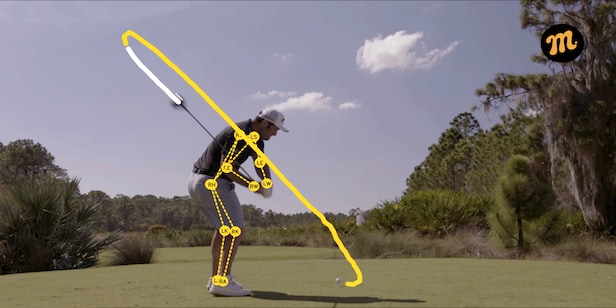The moment I realised Brooks Koepka was a secret golf genius – Australian Golf Digest

- by Admin
- December 6, 2024

As an unrepentant golf nerd endlessly obsessed with the minute details of the swing, Brooks Koepka seemed to be the antithesis of everything I found most fascinating.
I’ve spent most of my professional career trying to understand what makes elite golfers so good, but Brooks, the golfer who has won more majors than anyone else in his generation, says it’s not that complicated. He talked about getting bored during rounds, and that the secret to winning majors is simply focusing more.
Then a few months ago, Brooks Koepka arrived on set for our Golf Digest Grid Challenge, and put on a performance I still think about. I came away believing that Brooks Koepka is a sort of golf genius.
Brooks’ Mind-Blowing Performance
Brooks showed up after a busy morning, without any warmup. Worse yet: He’d barely swung a golf club in two weeks. Now we were judging him against his peers in an intricate, competitive, distance-control game. I’d forgive him for not wanting to be there, but Brooks didn’t appear concerned.
“It’s all good,” he said. “It doesn’t really change.”
A perfect score in The Grid challenge is to complete it in 10 golf balls. Koepka did it in 13, which makes him the current leader in the challenge, better than both reigning US Open champ Bryson DeChambeau and World No.1 Scottie Scheffler.
But it wasn’t the score itself, but rather the quality of the shots he hit along the way.
Of the 13 shots Brooks hit, eight finished within one yard of his stated target, and two more finished within just two yards. Most times, Brooks would be able to call the distance of the shot he hit less than a second after he hit it simply by the feel of impact.
What about this performance left me thinking Brooks might be the highest golf IQ guy in the game right now? Because it’s a performance that speaks to Brooks Koepka’s overall approach , and one we can learn from.
In his book “The Sports Gene,” David Epstein explains how in numerous studies, researchers found no discernible difference in hand-eye coordination between elite athletes and the rest of us. It’s also not your ability to perform the technique required – we all know good golf swings are a dime a dozen, and there’s probably someone at your club who can hit drives longer than most pros.
Rather, a key trait of experts is their ability to quickly recognise and key in on specific details that matter, then completely disregard the ones that don’t:
“Whether chess players, pianists, surgeons or athletes, [studies] have found that as experts gain experience they are quicker to sift through visual information and separate the wheat from the chaff. Experts swiftly move their attention away from irrelevant input and cut to the data that is most important to determining their next move. While novices dwell on individual pieces or players, experts focus more attention on the spaces between pieces or players that are relevant to the unifying relationships of parts in the whole.”
Brooks’ genius is being able to simplify
[Image: Richard Heathcote]
That’s the kind of practical golf genius that Brooks Koepka possesses. Brooks is elite among the elite at being able to spot the skills that matter most, and pair those skills together.
It’s evident when you look at his stats. They don’t fly off the page like other players, but you’ll see Brooks is not-so-coincidentally very good at all the really important stuff, like being really good off the tee (7th in SG: Off the Tee), out of bunkers (1st in Sand Save Percentage), putting from the crucial 4-8 foot range (18th) and converting birdie opportunities (15th in birdie conversion). As his Grid Challenge performance suggests, Brooks’ ultra-precise distance control and the ability to execute on command are two more of his hard-to-measure skills.
If you measure Koepka against the famed “Tiger Five” recipe for scoring, he’s strangely good at all that stuff, too. He doesn’t make many bogeys with scoring clubs (15th in approaches between 125-150 yards), he almost never blows easy up-and-downs (5th in scrambling inside 10 yards), and he’s an elite par-5 player (7th in par-5 scoring).
This approach shows up anecdotally in other areas of his game, too, especially when he begins talking about his golf swing.
It’s not that Brooks doesn’t know the golf swing—by contrast, he seems to understand it deeply. But he only cares about the information that makes his not-textbook golf swing work.
One of those is ball position. Brooks talked about how inching the ball position back can shift the swing path out to the right – a subtle technical detail that can send the ball sideways but one that many good golfers, even pros, don’t realise.
At the Masters, Brooks explained how fear of shifting pressure into his previously-injured right knee caused him to get too “left-side loaded,” more “stack and tilt,” which can cost him power.
At the PGA Championship this year, Brooks noted that his dispersion pattern on putts was a little tighter with the new putter he was putting into play. Who knew Brooks was measuring dispersion pattern data on putts? But again, it makes sense when you remember speed control on longer putts is one of the most important parts of putting.
“Just simple stuff,” he says.
Except it’s not really that simple to most people. It just seems simple to Brooks, because he’s hardwired to filter through the complicated stuff. He’s like the main character in “Good Will Hunting” waving the solution to a complicated math problem in a Nobel laureate winner’s face, not understanding what’s so complicated.
What you can learn from Brooks
With Brooks blissfully unaware of how terrifying a place the inside of an amateur golfer’s mind can be, one way the rest of us can adopt this mindset is by forming a kind of Brooks-inspired checklist.
First, pertaining to your mental game:
- In what ways are we making the game more complicated than we need to?
- What can we do to simplify our approach to a given shot?
- If we make an adjustment, can we do it in a way in which we’re still tapping into our athletic instincts?
Then, to how you play the game:
- Do you know the weak parts of your game?
- Can you name the one big miss you want to avoid?
- Do you know your golf swing’s bad habits which cause that miss?
- What are the things in your golf swing you can check every day?
- Are you prioritising the statistically most important parts of the game?
Ask yourself these questions enough and soon you’ll start answering them instinctively. Maybe then will we start making golf feel as simple as Brooks Kopeka claims it is.
You can watch Brooks’ full Grid Challenge episode right here:
The Latest News
-
December 22, 2024AFL legend Aaron Shattock placed in induced coma following freak accident while operating an excavator
-
December 22, 2024Test discard brings the heat after Boxing Day axing
-
December 22, 2024Australian cricket team at MCG: Near 60% win record, unbeaten for three years | Cricket News – Times of India
-
December 22, 2024Zheng to skip United Cup, focus on Aussie Open
-
December 22, 20242024 runner-up Qinwen Zheng pulls out of Australian Open lead-in event





